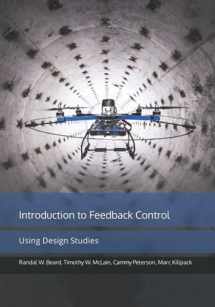
Introduction to Feedback Control using Design Studies
Book details
Summary
Description
This textbook provides a unique introduction to Feedback Control. It differs from typical control books by presenting principles in the context of three specific design examples: a one link robot arm, a pendulum on a cart, and a satellite attitude problem. These three design examples illustrate the full process of implementing control strategies on mechanical systems. The book begins by introducing the Euler Lagrange method for modeling mechanical systems and discusses computer simulation of these models. Linear design models are developed, specifically transfer function and state space models, that capture the behavior of the system around equilibria. The book then presents three different design strategies for output feedback control: PID control, observer based design, and loopshaping design methods based on the frequency response of the system. Extensive examples show how the controllers are implemented in Simulink, Matlab object oriented code, and Python.


We would LOVE it if you could help us and other readers by reviewing the book
Book review



